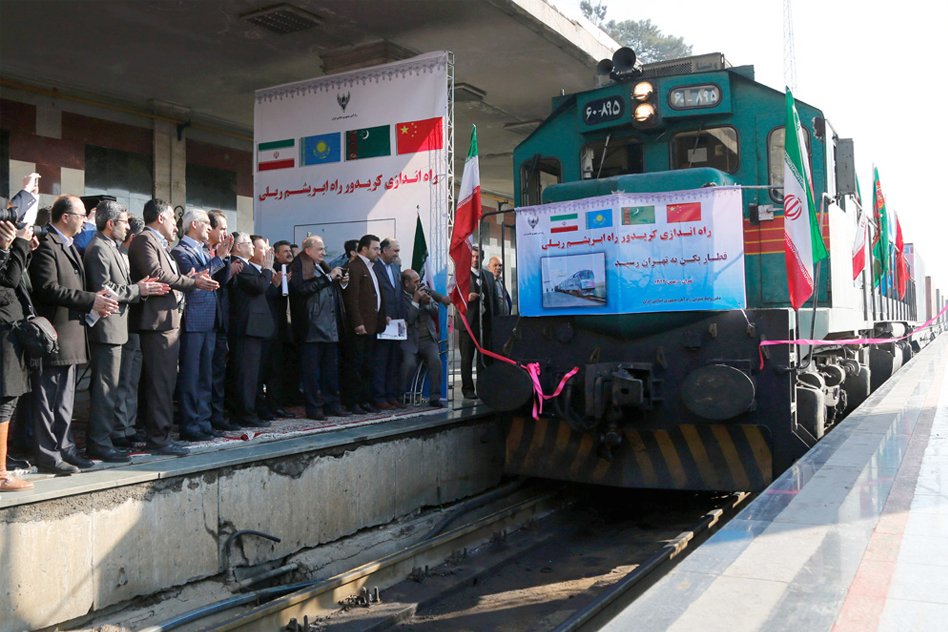Source: Catch News | Author: Aleesha Matharu | Image Courtesy: thanhnien
The ancient Silk Road trade route got a shot in the arm on 15 February when the first-ever cargo train from China arrived in Tehran.
The 32-container train, being referred to as the Silk Road train, passed through Kazakhstan and Turkmenistan. And going by the interest it has generated, it may change trade relations significantly.
Departure point: The city of Yiwu in Zhejiang province on 28 January. Yiwu is reportedly home to more than 4,000 businessmen from West Asia
Arrival point: Tehran on 15 February
Distance travelled: 10,399 km
No. of days: 14 days
The schedule: For now, the trains will run once a month. The frequency will be increased when required.
Who’s running them: Private contractors
Significance
- There’s a fair amount of hullabaloo because this marks a new beginning in trade between Asia and Europe.
- More specifically, it marks the revival the ancient Silk Road and gives impetus to China’s ambitious One Belt One Road (OBOR) initiative part of revived Silk Road diplomacy. It’s all part of China’s new national vision to improve its connectivity to Europe, Asia and Africa.
- The journey took 30 days less than what a typical sea voyage between Shanghai and the Iranian port of Bandar Abbas takes.
- It’s definitely going to boost bilateral trade between both countries. Last month, Chinese President Xi Jinping became the first global leader to visit Tehran since the sanctions were lifted. The two nations signed an agreement on boosting trade to $600 billion over the next decade.
China is investing heavily in Iran; it has plans to plough in $52 billion, up from $25 billion
- Currently, China is Iran’s biggest trading partner and accounts for a third of its foreign trade. Commercial ties continued despite decade-long international sanctions over Tehran’s nuclear programme, which were lifted in January after last year’s landmark nuclear deal.
- In fact, the trade between the two countries increased dramatically since 2007, nearing $44 billion in 2014. China plans to increase investments in the country to $52 billion, up from $25 billion.
- China is also the top buyer of Iranian oil.
- Chinese officials are also upbeat about exporting equipment to Kazakhstan to modernise the state’s infrastructure and are willing to provide financing.
The Silk Road revival project
According to the head of the Iranian railway company, Mohsen Pourseyed Aqayi, Tehran will not be the train’s final stop.
“Iran is strategically located in the Middle East, sharing land borders with 15 nations and sea channels on its northern and southwestern coasts,” said Iran’s state-owned Press TV.
“China sees Iran as a country that can play a crucial role in China’s New Silk Road initiative, given its access to extensive delivery routes connecting to the Middle East and Eurasia.”
“Because Iran lies strategically between Mesopotamia, Anatolia, the Caucasus, the Caspian Sea, Central and South Asia, the Persian Gulf, and the Arabian Sea, a broader network of trade is nearly impossible without it,” wrote Foreign Policy in 2012.
“Even the original Silk Road had Persia as a central pillar, including the key trading posts of Gedrosia in modern Baluchistan, Hecatompylos in today’s Semnan Province, and Traxiane, currently Khorasan province.”
The Iran-China link
Iran, currently, has a goal to lay down 3,000 km of railway tracks. It is also reportedly looking to set up power cables along existing lines, overhaul signalling systems, double up some tracks and upgrade its rolling stock.
For these, a lot of the funds seem to be coming from Beijing.
In fact, in July 2014, a consortium of Chinese companies won a contract to electrify the Tehran-Mashhad line and procure 75 locomotives. The deal is 85% financed from China.
The country has been speedy in getting the technology end of their deals to work. Perhaps, like China’s burgeoning influence in the subcontinent, the Silk Road could also be another example of Chinese victory.











